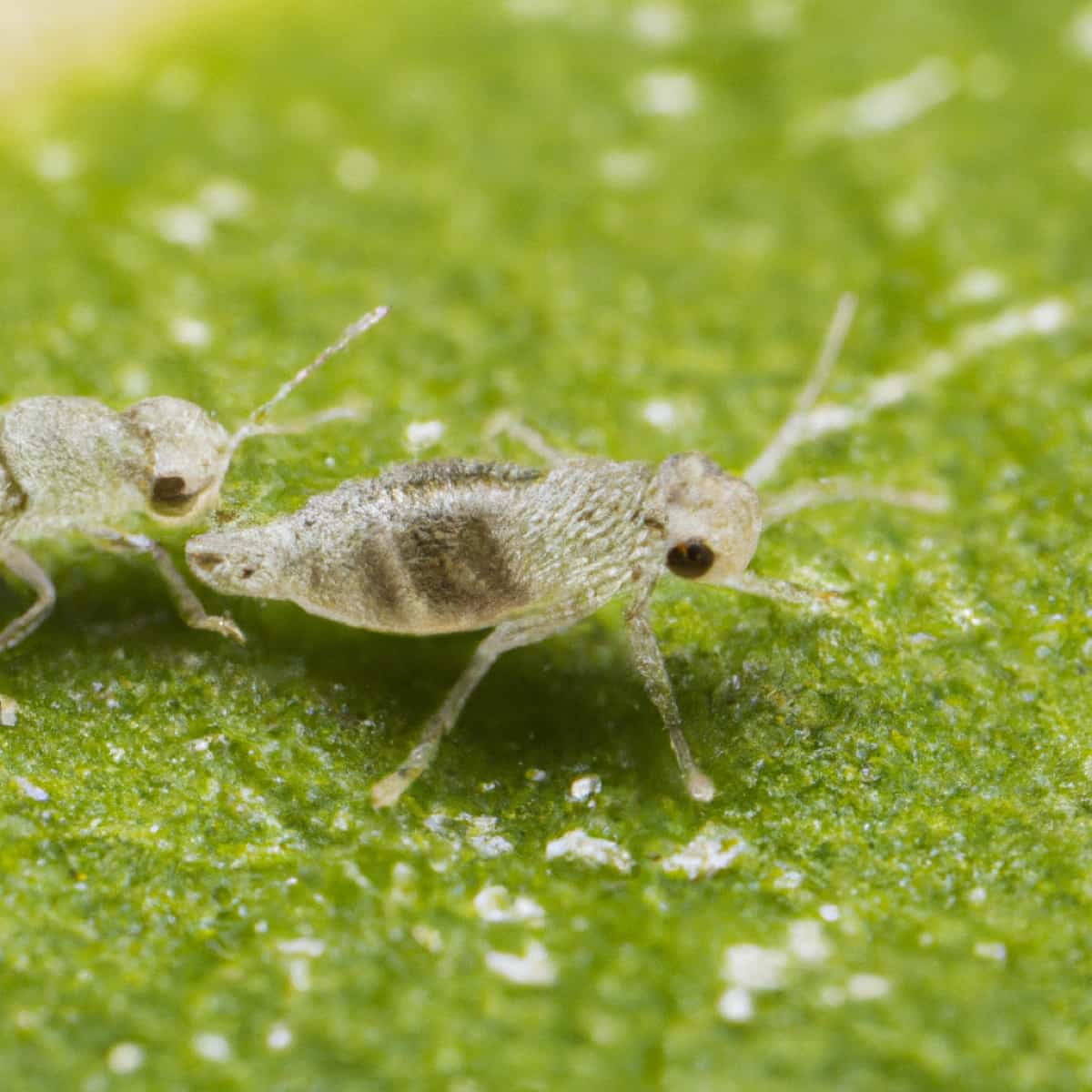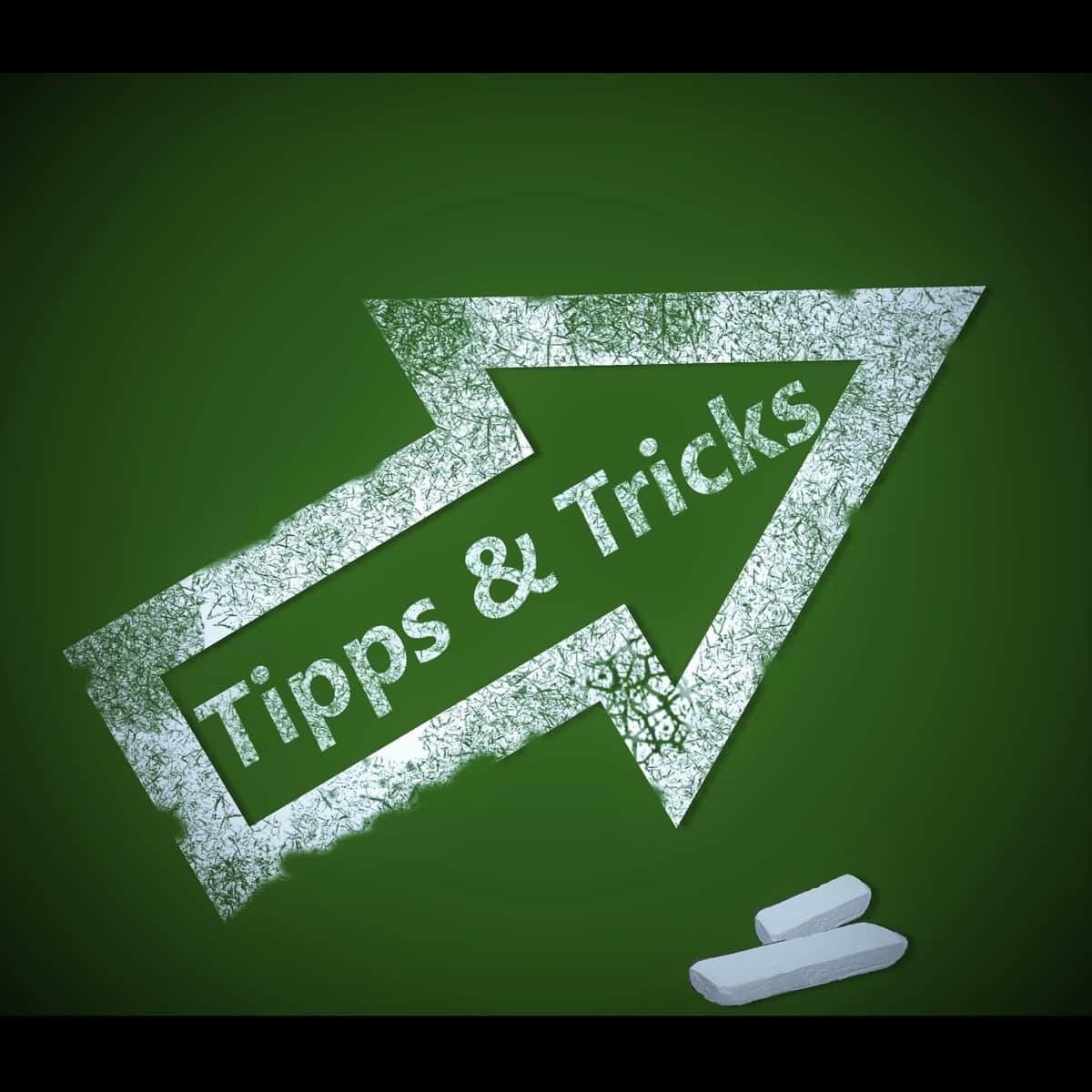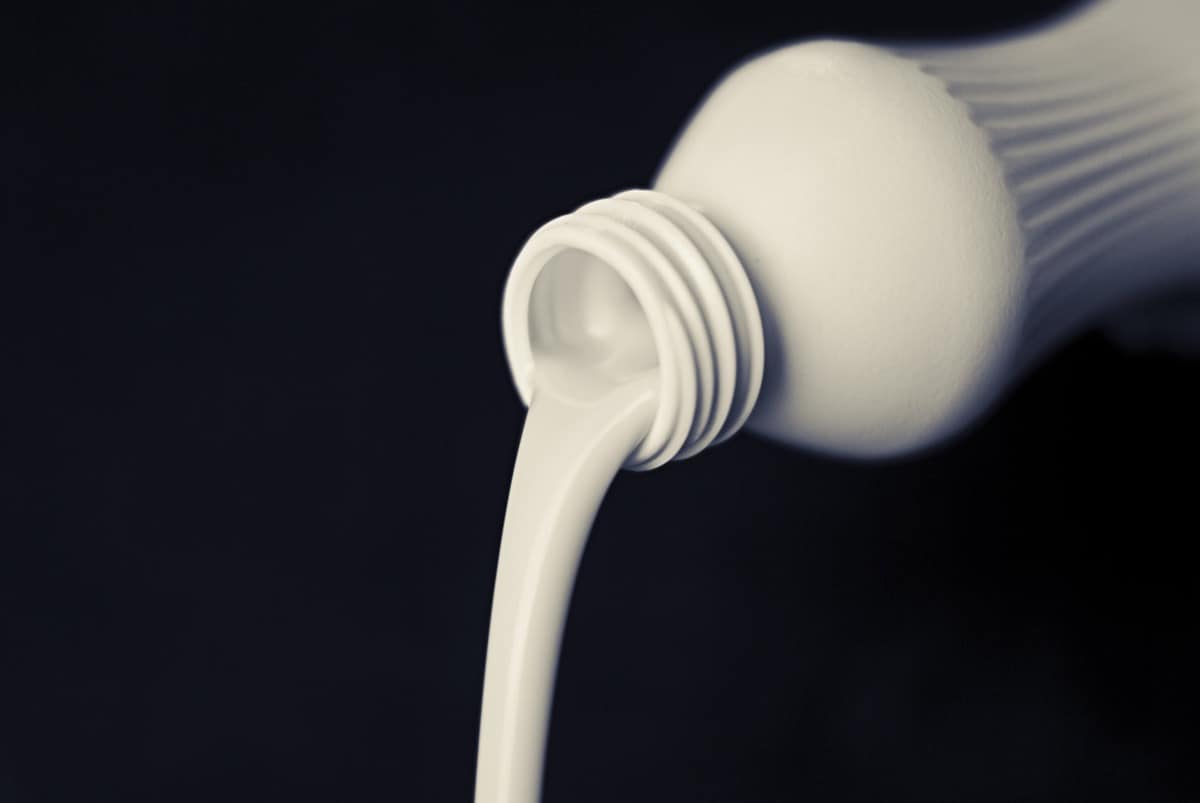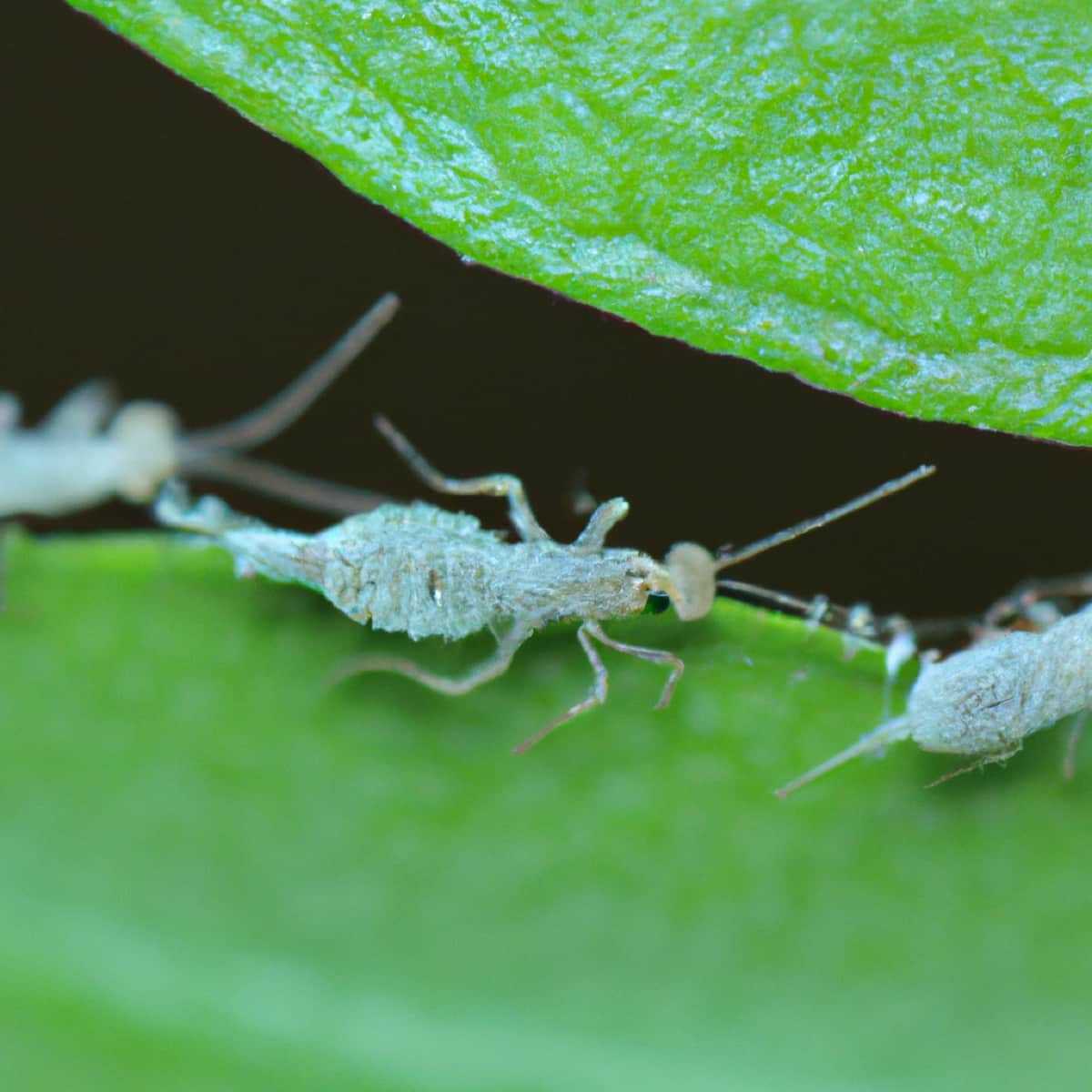Thrips are pesky garden pests, and if you don’t address them quickly, they can cause a significant amount of damage to your plants. Not only do they feed on the surface of leaves, but they also lay eggs in plant material which can lead to more infestations. Thrips are tiny insects that feed on plants by puncturing them and sucking out nutrients. Although they are small, they can cause a lot of damage to your garden. Thrips can spread diseases from plant to plant and weaken the plants, making them more susceptible to other pests and diseases.

They can also reduce the quality of your fruits and vegetables by causing deformities. The importance of removing thrips in your garden can’t be overstated. These pests damage plants and disrupt the natural balance of your garden ecosystem, which could negatively affect other beneficial insects and even the local wildlife that relies on your garden as a habitat. Identifying and removing thrips early on is key to keeping your garden happy and healthy.
Best ways to get rid of thrips on plants
Physical features of thrips
Thrips are tiny, winged insects. They range in color from translucent to black and measure only about 1/25-inch-long. Thrips feed on the sap of plants by puncturing the plant tissue and sucking out the fluid. This feeding damage causes discoloration, distortion, and scarring of leaves and fruits. Flowers may also be damaged, resulting in reduced seed production or stunted growth.
The life cycle of thrips
Thrips are tiny insects that feed on plants by puncturing them and sucking out their juices. They are a major agricultural pest, causing millions of dollars in crop damage yearly. Adult female thrips lay their eggs inside plant tissue or in crevices on the plant surface. The adult stage is the only reproductive stage in the life cycle of thrips.
Adults lay eggs on the leaves of plants. The eggs hatch into larvae. The larvae then pupate and emerge as adults. Some species of thrips can complete their life cycle in as little as two weeks, while others may take several months. Thrips are most active during the day and prefer warm, humid conditions.
Identifying thrips damage
Thrip damage is often first noticed as small, dark spots on the leaves of plants. As the infestation progresses, the spots may turn brown and dry out, eventually causing the leaves to drop off. In severe cases, entire branches or the entire plant may be killed. To confirm that thrips are responsible for the damage, look for their small, slender bodies on the underside of leaves or in other protected areas. When it comes to thrips damage, there are a few telltale signs to look for.
In case you missed it: Soil Borne Diseases and How to Treat Them Effectively: Control and Prevention Methods

One of the most common signs of thrips damage is stippling or silvering on leaves. This is caused by the insects feeding on plant tissue and sucking out the chlorophyll. Leaves with heavy thrips damage will appear yellow or brown and may eventually drop off the plant. Other signs of thrips damage include distorted or curled leaves and stunted growth. Thrips can also cause flowers to become deformed or discolored. If you suspect that your plants have thrips, it’s important to inspect them carefully and look for these signs of damage.
Types of thrips
- Avocado thrips – Avocado thrips are tiny, black insects that feed on the leaves of Avocado trees. Avocado thrips can cause serious damage to Avocado trees and are difficult to control.
- Bean thrips – Bean thrips are small, black insects that feed on the leaves of Bean plants. Bean thrips can cause serious damage to Bean plants. They feed by sucking the sap from the leaves, which can cause the leaves to turn brown and die. The larvae also tunnel into the stems and pods of beans, causing them to rot. Bean thrips are difficult to control because they reproduce quickly and can spread easily from plant to plant. The best way to control them is to prevent them from getting established in your garden in the first place.
- Citrus thrips – Citrus thrips can cause damage to the tree by feeding on the leaves and fruit. The damage can cause the leaves to turn yellow and fall off the tree. Citrus thrips can also transmit a virus to the tree that can cause the tree to produce less fruit.
- Cuban Laurel thrips – Cuban Laurel thrips cause damage to plants by feeding on the leaves. This feeding results in browning and curling the leaves, eventually leading to the plant’s death.
- Greenhouse thrips – Greenhouse thrips are small, black insects that feed on plant leaves. Greenhouse thrips can damage plants by causing leaf distortion, scarring, and discoloration. They can also transmit viruses from one plant to another.
- Melon thrips – Melon thrips can cause extensive damage to Melons and reduce yields by up to 50%. Melon thrips are difficult to control once they become established in a field. They have a wide host range, which means they can survive on many different types of plants. They are also resistant to many pesticides.
- Onion thrips – Onion thrips are small, dark-colored insects that feed on plant leaves and flowers. Onion thrips can cause serious damage to crops, especially Onions. They can complete their life cycle in as little as two weeks in warm climates.
- Toyon thrips – Toyon thrips are small, black insects that feed on the leaves of various trees and shrubs, including oak and toyon. While they can cause some damage to plants, they are generally not considered serious pests.
Tips to control thrips on plants
Discard infested leaves and stems
Discard infested leaves and stems as soon as you spot them. Thrips tend to congregate on the underside of leaves, so be sure to check there first. If you see any brown or black spots on the leaves, or if the leaves are curled or distorted, those are signs that thrips have been feeding on the plant. Cut off any affected plant parts and dispose of them in the trash.
In case you missed it: How to Control Pests and Diseases in Apple Trees: Causes, Symptoms, Chemical, and Biological Management

Blast off thrips with water
One of the best methods is to blast them off with water. You can do this by using a garden hose or a pressure washer. Aim the nozzle at the plants infested with thrips and give them good spraying. The water pressure will knock the thrips off the plants and kill them.
Kill adult thrips with blue sticky traps
Blue sticky traps are a great option if you’re looking for a relatively easy and natural way to kill adult thrips. These traps attract thrips with their blue color, and then the adhesive surface traps them. To use blue sticky traps, place them in areas where you’ve seen thrips or where they’re likely to congregate. Check the traps regularly and remove any trapped insects. Be sure to replace the traps when they become full or no longer sticky.
Take help from natural thrip predator
Several different predators can be used to help control thrips populations. One of the most common and effective is the minute pirate bug. These small, black bugs feed on all stages of thrips, including eggs, larvae, and adults. Another natural thrips predator is the big-eyed bug. These brownish-gray bugs primarily feed on adult thrips. Predatory mites are also effective at controlling thrips populations. Green lacewings are another type of predator that can be used to control thrips.
Use milk solution
To make this solution, mix 1 part milk with nine parts water. Then, apply it to the affected area using a spray bottle. This method works best when the weather is hot and sunny, as the heat will help evaporate the water in the solution and leave behind the milk proteins, which will kill the thrips. You may reapply the solution every few days to keep the thrips at bay.
In case you missed it: How to Control Pests and Diseases in Papaya: Causes, Symptoms, Chemical, and Biological Management

Use insecticidal soap or neem oil spray
If you have a thrips infestation, you’ll need to get rid of them immediately. You can use neem oil spray or insecticidal soap to do this. Insecticidal soap is a safe and effective way to kill thrips. It works by contact, so be sure to spray all of the affected areas thoroughly. Neem oil spray is also an effective option and has the added benefit of repelling other pests.
Keep aluminum foil around the plants
Aluminum foil will help keep thrips away from your plants. Place a sheet of aluminum foil around the base of the plant, and the thrips will be unable to get to the leaves and flowers. You can also use aluminum foil to create a barrier around your garden.
Use spinosad
If you want a natural way to get rid of thrips, consider using Spinosad. It works by causing paralysis and death in the insects that come into contact with it. Spinosad is available in both liquid and granular form, so you can choose the option that best suits your needs.
Use essential oil
You can use essential oils to remove thrips naturally. One way is to add a few drops of the oil to the cotton and then place the cotton near where the thrips are congregating. You can add a few drops of oil to a spray bottle filled with water and then mist the area where the thrips are present. Finally, you can add a few drops of essential oil to a diffuser and diffuse it in the room where the thrips are present.
In case you missed it: How to Keep Squirrels Out of Your Garden: Ideas, Tips, Techniques to Control Naturally

Grow thrip repelling herbs
There are a few key herbs that act as natural repellents to thrips. Basil herb is not only a great addition to any kitchen, but it also repels various pests, including thrips. Plant Basil near areas where you’ve seen thrips activity and watch them quickly disappear. Like Basil, Rosemary is also a versatile herb with culinary and pest-repelling properties. Thrips hate the strong smell of Rosemary, so planting this herb near your garden or house will help keep them at bay. Lavender is another herb with a distinct scent that deters thrips (and many other pests).
Use diluted isopropyl
To do this, mix 1-part isopropyl alcohol with 1-part water and put it into a spray bottle. Then, spray the solution onto any affected plants. Isopropyl alcohol is effective at killing thrips because it dehydrates them. However, it’s important to note that isopropyl alcohol can also damage plants if used too high of a concentration. That’s why it’s important to always dilute the solution before using it on your plants.
Tips to prevent thrips on plants
Start with a clean garden. Remove debris and dead leaves that could serve as hiding places for thrips. Use traps to catch adult thrips before they can lay eggs. Yellow sticky traps are particularly effective. Act immediately if you see silvery streaks on leaves or distorted new growth signs, as thrips can spread rapidly and damage plants. Use organic pest control methods whenever possible. Neem oil is a safe and effective natural insecticide that will kill thrips without harming beneficial insects or humans. Plant resistant varieties of flowers and vegetables in your garden.
In case you missed it: Types of Insect Pests in Your Garden: Control Methods, Solutions, and Treatment

Conclusion
When it comes to gardening, pests are often the bane of a gardener’s existence. One of the more pernicious and hard-to-get-rid-of pests is the thrips. These tiny, almost invisible creatures feed on various plants and can quickly wreak havoc if left unchecked. This article explains why these pesky bugs are so important to get rid of in your garden and what you should do to eliminate them from your yard.
- How to Grow Hibiscus from Flower
- Plantation Ideas for Home Decoration: A Beginners Guide
- Flower Garden Designs and Layouts for Beginners
- Planting and Spacing Techniques in Papaya: A Beginner’s Guide
- Growing Gold: Essential Techniques for Planting Pineapples
- How to Make Kalanchoe Plant Bushy: Home Remedies and Solutions
- 11 Reasons Why Your Gardenia is Not Blooming: Home Remedies and Solutions
- Eco Elegance: The Guide to Designing a Drought-Tolerant Landscape
- Gardening on a Slope: Strategies for Hillside Landscaping
- Nourish and Flourish: Top Organic Mulches for Thriving House Plants
- Everything You Want to Know about Indian Mogra Flower: Discover Uses and Growing
- Green Thumb Success: Expert Tips for Cultivating Greenhouse Pumpkins All Year Round
- Maximize Growth & Flavor: The Ultimate Guide to Companion Planting in Herb Gardens
- How to Control Rhododendron Problems Naturally: Home Remedies and Organic Ways to Fix Them
- Natural Magic: The Remarkable Benefits of Cinnamon for Plants
- Best Steps to Revive Dying Tulip with Natural and Organic Treatment
- 10 Reasons Why Your Angel Trumpet is Not Blooming: Remedies and Treatment
- How to Fix Periwinkle Leaf and Flower-Related Problems: Natural Remedies and Solutions
- How to Fix Zinnias Leaf and Flower Problems: Discover Natural and Home Remedies
- Organic Steps to Induce Lemon Tree Flowers: A Comprehensive Guide
- Bloom Booster: Crafting the Perfect Homemade Bougainvillea Fertilizer
- Optimizing Growth: A Guide to Applying NPK Fertilizer for Potted Plants
- 10 Best Homemade Fertilizers for Rubber Plant: DIY Recipes and Application Method
- How to Boost Female Pumpkin Flowers: Effective Steps for More Flowers and High Yields
- Transform Your Indoor Garden: Top Benefits of Pink Salt for Houseplants
- 10 Best Homemade Fertilizers for Peacock Plants (Calathea): Easy DIY Guide
- Unlock Blooms: 9 Reasons Why Your Potted Chrysanthemum is Not Blooming
- 8 Reasons Why Your Potted Hibiscus is Not Blooming: Fix it with Simple Solutions
- Unlock Blooms: 9 Key Reasons Your Potted Frangipani Won’t Flower
- 10 Reasons Why Is My Ice Plant Not Blooming: Remedies and Treatment
- 10 Reasons Why My Potted Hydrangea Not Blooming: Treatment and Remedies
- 10 Reasons Why is My Wisteria Not Blooming: Remedies and Treatment
- 10 Reasons Why is My Goldfish Plant Not Blooming: Remedies and Treatment
- Maximize Your Space: Ultimate Guide to Balcony Gardening with Grow Bags
- 10 Reasons Why Your Iris is Not Blooming: Remedies and Treatment
- 10 Reasons Why Your Anthurium Plant is Not Blooming: Treatment and Remedies